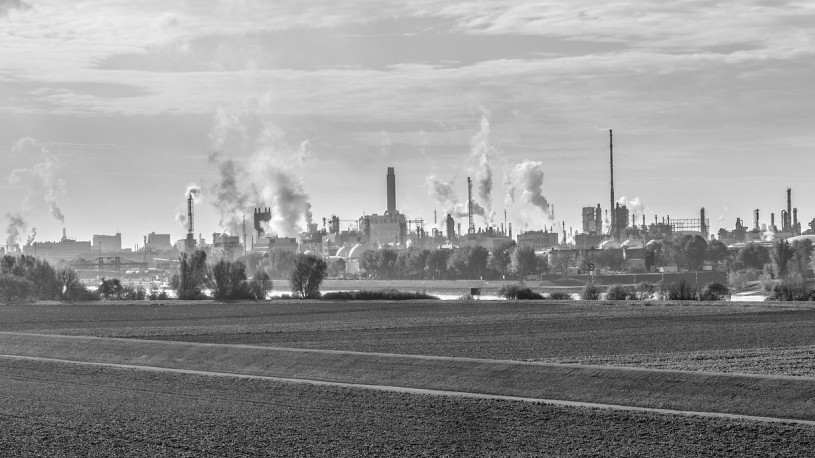-
The EU Chemical Industry is Stagnant
 Continue Reading
Continue ReadingRecent analysis by Cefic (the European Chemical Industry Council) has shown that despite the continuing confidence of manufacturers, the European chemical industry continues to stagnate.
Whilst the EU economy as a whole has begun to gradually recover from the shocks of 2008, there is still little movement in chemicals. Q1 production growth for 2015 has been measured at 0.1%, whilst sales dropped by 5.5%, despite a price free fall of up to 7.3%. The analysis also showed that utilization of production capacity is unmoved from the levels of 2014, and stock levels also remain static.
Notably, the speciality chemicals sector is doing well, and this is helping to offset the declines elsewhere, but overall the outlook is gloomy.
Given that the EU has such an historical advantage of excellence in both production and research levels over the rest of the world, it is worth considering how this happened.
Fuel is one major problem for the EU. Whilst the Middle East and Russia enjoy an abundance of cheap oil, and the US begins to tap into its shale gas resources, the EU is beginning to wonder how it will survive once its own oil resources dry up.
Whilst it is trying to use technology to develop renewable energy sources, at present the cost of these technologies act as a burden to price competitiveness for the chemicals industry. A recent Cefic study noted the average price of industrial energy per MWh for Italy was €121, Germany €99, the Netherland €90, Spain €70, the UK €64. Whilst in the USA it cost only €47, China €30, Russia €19 and Saudi Arabia €15.
Whilst the value of the Euro has fallen drastically over the past 12 months (currently close to parity with the US dollar), it is difficult to compete if energy is expensive. This is especially true when considering how large a part of chemical production energy is. As Jeremy J. Patt, senior strategy leader for global research and development at Dow Chemical Company, notes, “In 2008, Dow’s total energy bill was $27 billion, by far the largest component of production costs and equal to about half of total revenues.”
Another problem facing the EU is that it also appears increasingly politically divided and undecided on how to tackle its ageing infrastructure, whilst other regions benefit from a united political will and greater investment.
As a recent KPMG report states, “Whilst Middle Eastern chemical producers continue to seek expansion along the value chain into higher value added solutions. Their Chinese counterparts are attempting to fulfill a government directive to make the country self-sufficient in chemicals. These Middle Eastern and Chinese entities are often cash-rich and backed by government support. A rapid path to achieving these goals appears to be offered by acquisition of technology and intellectual property from a European chemical industry seemingly beset by structural problems.”
Thus it appears that whilst the EU is troubled by increased competition overseas, from heavy investment and dynamic government support, the EUs response at present, is to sell off the family silver. An approach that will never support the industry’s recovery. As Chris Stirling, Head of Chemicals for KPMG in Europe notes, “The European chemical industry must capitalise on its historic advantage in innovation to stay ahead of the competition.”
The EU chemical industry currently represents almost 20% of global production, and is still an important player in the global market, but the chance of further development is not optimistic, with competitiveness now seen as the main obstacle to growth and development.
But perhaps the most worring aspect from this latest Cefic report is its tone. As the analysis is so intertwined with skepticism and pessimism for the future that it is foreseeable that confidence will soon head South in the way that sales, prices, investment and the value of the Euro has.
There is the possibility that the trend can be reveresed. Industry leaders have been promised that the EUs implementation of REACH will prove to be a groundbreaking development that will set a global industry standard, and not act as a dead weight of legislation around the neck of a dying industry.
Similarly, if the TTiP trans-Atlantic trade agreement can free up restrictions on businesses, then there is hope for the 1.2 million Europeans employed in the chemicals industry. But at present, failure to act will see continued stagnation at a time when the rest of the world’s chemical industries are beginning to blossom.
-
Tips on Chemical Design
 Continue Reading
Continue ReadingChemical engineers are interested in processes. Businessmen are interested in products. Somewhere along the line, both of these demands must be met if the project of developing a new chemical is to be successful (and profitable).
Chemical engineers, (generally being a brainy and analytical bunch of people) like to have a system for how they are going to create a process. So it is not surprising that there has been a great deal of thought and discussion on this matter over the years, with the great and the good of the chemistry world passing on advice on the best methodology.
Over time, this methodology has been changed, other times merely restated. Sometimes the process is recommended as a long list of things to consider, sometimes that list is short, but the premise for the development of a new chemical generally remains the same the world over.
As David Mody of Queen’s University in Ontario, states, perhaps most succinctly, “Design in its most simplistic viewpoint is composed of the following steps:
- Determine the problem and its constraints
- Generate potential solutions
- Develop sufficient detail that solutions can be compared and eliminated
- Implement the preferred solution”
But however clear and simple the scientific method, the process is quickly clouded by the introduction of the businessman. Much as the German military strategist Helmuth von Moltke noted that, “No battle plan survives contact with the enemy.”
For while the chemist may have a clear idea of the possible, the businessman may have ideas based more on a wish list of factors. Both of them should keep in mind the practicalities of their end product.
As much of the practicalities of the end product are based in the raw materials used, it is worth considering these points when designing a new chemical product:
- The raw materials should be commercially available, and not restricted on account of process claims.
- The materials should be of a grade suitable for immediate use.
- The raw materials should be easily transportable, and not encumbered by import restrictions, law enforcement watch lists or EPA restrictions.
- It should also be TSCA and REACH listed.
- It should also be free of problematic isomers and explosaphors, like azide or nitro esters.
Hopefully, by following these recommendations, costs can be kept low.
Without the worry of expense, we would all be alchemists. So the chemist should also be wary to minimise expensive procedures. For example, does it require tight fractional distillation for final purity or can this be avoided? Does it need more than a single protection scheme or require large amounts of high pressure work? Is it soluble enough in process solvents? Is it very stable? Does it require extremes of hot or cold? Can it be easily isolated, or does it require some complicated centrifugal process?
Always question your levels of purity. The costs for increasing purity by one or two percentage points can easily escalate. So it is important to consider whether the extra quality is cost effective or even necessary.
Often each individual process will require reconsidering. Can an n-octyl ester group product be used in favour of 2-ethylhexyl ester? Will the product have organic solubility problems? Can aliphatics enhance processability? Are nitromethanes used as a solvent? Or does the process need an expensive PGM catalyst?
Given the complexity of designing a new process, the multitude of factors to be considered, the array of raw materials, the importance of legislation and costing, it is understandable why chemists are always trying to keep the methodology of the design process simple.
Certainly there will be changes in methodology over time, for example today it is more important to consider recycling and sustainability, (concepts that were less prominent thirty years ago), but the central theme remains.
Use raw materials that are easily accessible and keep your processes simple.
-
Redefining Sustainable
 Continue Reading
Continue ReadingLife on our planet is changing, and it is changing at an exponential rate. Previous changes in fashion, music and technology helped define the decades of the 20th century, from the roaring twenties to the swinging sixties. Today’s fashion, music and technology passes in a matter of weeks. Pop bands form and break up whilst the members are still teenagers, toy crazes last a single holiday season and your mobile phone is out of date about the same time that you take it out of the box.
And so it is with the way that global chemical companies operate. Previous manufacturing giants moved with great solemnity to action, developing long term plans and policies for sustained growth. Nowadays, it is more important than ever for chemical bosses to stay ahead of the curve and react to a smaller, faster moving world. Those who failed to profit from the Tiger economies of 20 years ago, face an uphill battle to compete today. Those who do not modernise their practices to comply with EU’s REACH policy will suffer at the hands of shareholders and it is only the swift footed businessman who will negotiate the mergers and acquisitions storm raging across China this month.
With an expanding population and increasing standards of living, the pressure on the chemicals industry to provide and to be sustainable and low impact is immense. As margins become smaller, the pressure on the environment is growing.
For now it seems as if chasing profits leaves little time to look after the planet, but maybe all that is about to change.
The World Business Council for Sustainable Development (WBCSD) was founded in 1992, and describes itself as “a CEO-led organization of forward-thinking companies that galvanizes the global business community to create a sustainable future for business, society and the environment.”
It certainly is well led, supported, as it is, by a number of major industrial players, including Unilever, construction giant Lafarge, Royal Dutch Shell, Solvay and China Petrochemical Corp. to name but a few.
WBCSD’s latest initiative for saving the world is a snappy, little project called Vision 2050. This plan has not only a ‘roadmap’ to success, as well as the obligatory ‘mission statement’, but also “a new agenda for business laying out a pathway to a world in which … people can live well”.
One cannot argue with the sentiment of such actions, our planet will struggle to feed, clothe and keep warm the predicted 9.6 billion people that will be around in the year 2050. However, you don’t have to be too big a cynic to question the desire to succeed by “providing a springboard for dialogue and debate” or by instructing others to “achieve more with less”.
The plans further mandates include a shopping list of ideals that reads as follows:
- Incorporating the costs of externalities, starting with carbon, ecosystem services and water, into the structure of the marketplace;
- Doubling agricultural output without increasing the amount of land or water used;
- Halting deforestation and increasing yields from planted forests;
- Halving carbon emissions worldwide (based on 2005 levels) by 2050 through a shift to low-carbon energy systems;
- Improved demand-side energy efficiency, and providing universal access to low-carbon mobility.
Little is mentioned of how to meet these noble goals, but we are informed that an ‘Information mural’ is in place, which together with the ‘Information poster’ can be purchased for $595 plus shipping (sustainably it is hoped) from Canada.
How far these sentiments will carry in the board room of Unilever or Royal Dutch Shell’s next shareholder meeting remains to be seen, but there are many who fear it is just window-dressing publicity.
Has there ever been a business venture that has philanthropically impacted our planet?
Certainly we have seen charities have an impact on world want (Oxfam, Save the Children) and the global environment (Greenpeace, Save the Whale). Similarly government has played a part in efforts such as enforcing clean air acts and banning non-energy efficient light bulbs, but what evidence do we have of an impact from big chem?
There have been numerous philanthropic individuals from business, from steel manufacturer, Andrew Carnegie to British sugar magnate Henry Tate, to today’s Bill and Melinda Gates Foundation, but where is the impact for sustainability from firms themselves? Are Unilever and China Chemical Corp. doing their bit to help the planet?
There are many people who will think that they don’t do enough, and that their focus is too centred on profit. But in that belief lies the key to the problem, for ultimately you cannot remove profitability from sustainability. The chemicals industry, like any other, is based on economics.
Certainly the rhetoric of Vision 2050 and similar projects are worthy, but in the end it’s all dollars and cents. And that makes sense. Because the simple message of reduce, reuse, recycle is both sustainable and profitable, and you don’t need a ‘roadmap’ to find it.
